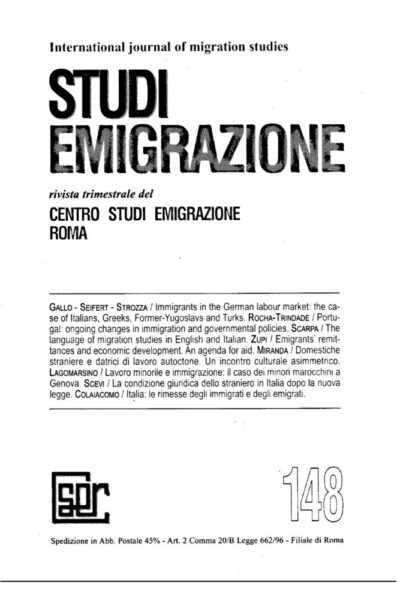Studi Emigrazione – dicembre 2002 – n.148
Biblioteca Digitale » Studi Emigrazione – dicembre 2002 – n.148
Migration to Germany and German migration policies have certain peculiarities which are essential when looking at the processes of migration and integration of immigrants. On the one hand, Germany has one of the highest immigration rates; on the other hand, for a long time Germany officially denied to-be an immigration’s country. When Germany started to recruit immigrants from Turkey, Italy, Greece, Spain and Portugal in the late 1950’s and Yugoslavia in the early 1960’s this was considered to be a short-term solution to bridge periods of extreme labour shortage. Work permits were granted only fora specific period of time, the same for their prolongation, granted only if necessary to the labour market [Seifert, 1995]. In this way German authority intended to keep the foreign labour force flexible and adaptable to the labour market demand. During the economie recession of 1966- 67, this “guest worker system” had the desired effects and the number of foreign workers decreased sharply. During the subsequent period of economie recovery the number of foreign workers increased again [Hollifield, 1992].

